Shigeru Ban is a well-known architect born in Japan in 1957. He has distinguished works with his use of innovative materials, experimental approach, and his connection of Japanese and Western architectural elements. Ban was named the 37th recipient of the Pritzker Architecture Prize in 2014. The Pritzker Jury mentioned him as “…a committed teacher who is not only a role model for the younger generation, but also an inspiration”.
Shigeru Ban’s innovative work with paper, specifically recycled cardboard paper tubes, used to make fast and efficient shelters, houses, and temporary structures is the most famously known subject about him. The production and use of such innovative materials and his humanitarian projects are the signatures of Ban’s architectural approach. The Pritzker Jury comments on his dedication to social issues, and his projects such as shelters or contemporary structures after devastating natural disasters as “When tragedy strikes, he is often there from the beginning.” His innovative approach of paper log houses as a response to a disaster was first produced after the Kobe earthquake in 1995, and since then he has often been in the disaster area from the beginning. The recent encounter was after the devastating earthquake in Turkey.
While being famous for his approach to temporary structures in disaster relief architecture, he also has various famous permanent projects with different functions such as private houses, community centers, condominiums, and towers. He gives lectures for the young generation and expresses his desire to use his knowledge and experience not only for the privileged people but also for the general public. Subjects and discourses about sustainability, social design, and using architecture as a social and environmental tool to provide solutions for increasing crises rather than a profession that is triggered by economic benefits have become popular recently.
Shigeru Ban, in this sense, is defending this kind of architecture from his early works. Based on this approach, this article aims to summarize Shigeru Ban’s early life and career, his philosophical approach, paper tube architecture, and some of his most famous projects.
Early Life and Career
Being a son of parents who are into art and fashion, Shigeru Ban grew up in a close relationship with design. After being fascinated by traditional carpenters’ works at an early age, he wanted to become a carpenter. His talent in arts and crafts and recognition during school times made him want to be an architect. His first step in architecture, specifically the structure models using paper, wood, and bamboo, was the evening classes at university preparation school. During his evening school, his teacher was Tomoharu Makabe. With Makabe’s guides, Ban came across an article on John Hejduk who was the dean of Cooper Union’s School of Architecture in New York, as the paper architect. His encounter with the models and plans was so revolutionary for him that he decided to go to the United States and study architecture at Cooper Union.
For these reasons, he first started his study at the Southern California Institute of Architecture and later went on to Cooper Union’s School of Architecture. He studied under John Hejduk, who was one of the New York Five and graduated in 1984. Shigeru Ban not only learned the fundamentals of architecture from Hejduki but also gained an interest in the creation of three-dimensional poetry and architectonic poetics.
Ban also got lasting influence from the experimental mind of Hejduk. The unique structural solutions of Ban started with his formal explorations with basic building materials. One of the key approaches of Ban is the theme of invisible structure. He does not prefer to openly express the structural elements, rather he suggests incorporating it into the design. Therefore he is not always into the newest materials and techniques but the expression of the concept behind the building.
Architectural Approach and Design Philosophy
Shigeru Ban’s approach to architecture can be characterized as focused on simplicity, functionality, and flexibility. One of his significant discourses about architecture is that he believes that architecture should be responsive to the users’ needs and should be designed to improve people’s lives.
As a Japanese architect, he uses various themes and methods found in traditional Japanese architecture. The idea of a ‘universal floor’ that allows continuous space between all rooms is one of these. His education under Hejduk influenced Ban in various ways. Rationalist views on the architecture of Hejduk led Ban a way to revisit Western modernism. With his heritage from Japanese architecture and Western education and influences, it is possible to say that Shigeru Ban has created a combination of both. He has become one of the most well-known Japanese architects who embraces the combination of Western and Eastern architectural themes and methods.
The material choices of Shigeru Ban in his designs also highlight his sustainable approach to architecture. He emphasizes the importance of using local materials and involving local communities in his projects. He believes that architects are responsible for environmental and social issues. Therefore the fame of his innovative use of materials such as cardboard, bamboo, and recycled paper and his post-disaster projects is no coincidence.
Paper Tube Architecture
Shigeru Ban is mostly known for his paper tube structures. The low-tech application of paper, its cost, and recyclability attracted Ban to the material while producing innovative methods and designing them. The first application of a paper tube structure was the Paper Log house in Japan after the Kobe earthquake to quickly provide suitable shelter for the victims in 1994. As Ban always reacts to these post-disaster situations sensitively, the Paper Log house has been produced in different countries such as Turkey after the 1999 earthquake and India after the 2001 earthquake.
Materials other than paper tubes and designs have been recreated for the specific regions according to the available materials, or necessities for larger families etc. For example in Turkey waste beer containers, which were found a lot in quantity, have been used to create the base of the house, and larger rooms were created for larger families, or in India eaves were created by resembling traditional houses that provide a comfortable life for the victims. First applied as an emergency response, the use of paper tubes in structures was beneficial for both the sense of sustainability and cost. Regardless of being built as temporary structures, they have the potential to be used for longer periods if in suitable and comfortable conditions.
1. Paper Log House
Year: 1995
Location: Kobe, Japan
The first Paper Log House for emergency response was built in Kobe, Japan after the devastating earthquake in 1995. The earthquake devastated the city and caused more than three hundred thousand people to leave in despair and homeless. These people lived in harsh conditions for six months after the earthquake. After six months Shigeru Ban took the challenge and developed these emergency shelters in response to the severe needs of the victims. One of the key points of the projects was using affordable and common materials to install and uninstall easily. The foundation of the structure is made with beer crates which also makes the structure float. The Paper Log House can be installed with eight people within two days. This novel prototype of construction became noted as the Paper Log House.
The innovative approach to the materials also allowed the relief shelter to be a product of craftsmanship. The design of Paper Log Houses consists of beer crates, sandbags, plywood, cardboard tubes, waterproof tape, and steel rods. The simple yet beneficial combination of materials provides advantages like durability, recyclability, and non-toxicity. After the first construction of the Paper Log House, the approach has been repeated with the potential of adaptation for location. Following Kobe, they have been built in Turkey and India for earthquake survivors and adapted for those uprooted by genocide in Rwanda, and for refugees in Kosovo.
2. Cardboard Cathedral
Year: 2012
Location: Christchurch, New Zealand
The earthquake in Christchurch region, New Zealand, in 2011, killed over 200 people and inflicted irreparable damage on the city’s iconic gothic cathedral of 132 years. The cathedral was a copy of one in Oxford, England, and was one of the most famous landmarks of Christchurch, pictured on postcards, souvenirs, and tea towels. The project was done as a pro-bono work by Shigeru Ban in collaboration with Warren and Mahoney. After the earthquake, the construction began and was planned to be completed in 2012. However, the explosion of the cardboard made them wet before the enclosure was completed. These external problems delayed the completion and opening, and the cathedral was opened in 2013. Even though the project began as a temporary replacement for the iconic church, it became another landmark for the city.
For the design and construction 2 feet diameter cardboard tubes, timber, and steel were used as materials. The foundation is a concrete slab and walls were made from eight shipping containers and they held up a roof from polycarbonate. Shigeru Ban’s first initiative was to use cardboard tubes as structural elements. However, the manufacturer could not provide tubes with enough thickness, and the importing tubes for the project was rejected due to cost-beneficial reasons. Therefore, the solution for the tubes was reinforcing them with laminated wood beams. They were coated with waterproof polyurethane and flame retardants. The colorful window is one of the most attractive elements of the cathedral. In addition to serving as a cathedral, the building serves as a community gathering point and a conference venue. The production of a religious place after a disaster also highlights the social and spiritual healing necessities of victims.
3. Aspen Art Museum
Year: 2014
Location: Aspen, United States
The Aspen Art Museum is located in the center of the high mountain town of Aspen Colorado on a prominent downtown corner site. Shigeru Ban’s initial aim was to provide transparency and open-view planes. This approach invites those outside to engage with the building’s interior while providing those inside the ability to see their exterior views. Design features include an innovative long-span timber space-frame roof structure, woven wood panel façade, structural glass floors for gallery daylighting, outdoor gallery stair that connects the site plaza to the third-floor roof level, and glass elevator.
The distinguished look from the woven facade is made from a durable, fire-resistant composite called Prodema, an amalgam of paper and resin encased within a dual-sided wood veneer which is reminiscent of Shigeru Ban’s signature paper structures. The building designed on three storeys provides galleries on the first two floors above ground level and one floor below. The third floor is a multi-function space and café. Half of the third-floor area is given over to an outdoor terrace with views up to the mountains. Vertical circulation between floors is provided by a grand staircase and a glass elevator. The Grand Stair is one of the attractive elements of the building that is designed between the woven exterior and its interior structure.
4. Curtain Wall House
Year: 1995
Location: Tokyo, Japan
The unusual appearance of the Curtain Wall House is one of the most known projects of Shigeru Ban. The house is intended to be a reflection of the owner’s lifestyle. It is open to the outdoors and utilizes contemporary materials in new interpretations of traditional Japanese styles. The openness and the curtains instead of traditional walls take the first attention. The curtain wall term in architecture is the outer skin covering the building without serving as a structural element. In the project inspired by this term, curtains are used in an unexpected way, and literally, the curtains function as the walls of the house. In traditional Japanese design elements such as shoji screens, or Fusuma doors can be linked to the curtain in this sense. According to Shigeru Ban, shades are simple, architectural, and artistic and also work for ventilation while creating an aesthetically seductive and poetic experience with natural airflow.
The three-story house includes wide deck extensions attached to the east and south sides of the second-floor living room. The tent-like curtains are hung on the outer facade between the second and third floors. The interior environment is controlled by opening and closing this Japanese-style curtain wall. During the winter, a set of glazed doors are available to completely enclose the house for insulation and privacy.
5. House of Double Roof
Year: 1993
Location: Yamanashi, Japan
House of Double Roof is a project that is built for a weekend retreat on a sloping site overlooking Lake Yamanaka. The site experiences heavy snowfall in the winter. Therefore the house required a roof that could accommodate these heavy snow loads. The distinctive look of the separated upper roof has the primary structural function of bearing the weight of the snow. This structural roof is made from folded steel plates in available dimensions. Since the ceiling is not suspended from the roof, it is freed of the deflection margin, and thus the ceiling becomes a second roof with a minimal load. In addition to the load-bearing function, the upper roof also provides shelter against direct sun during the summer.
Materials used in the design and construction vary. Steel pipes are utilized as support beams for the corrugated metal roof. Other structural elements below the roof are made of wood. The places inside the house consist of a large living, dining, kitchen, bedroom, and bathroom area that are connected by an exterior covered terrace. The top-level roof serves as a unifying element for all interior spaces. The blurring and unification of exterior and interior space show Ban’s experimental side and approach in his designs.
6. Fujisan World Heritage Center
Year: 2017
Location: Fujinomiya, Japan
The Fuji mountain is the highest in Japan. It became listed as part of UNESCO’s world heritage in 2013. After this selection, the local government decided to create a museum to protect the legacy. Shigeru Ban won the competition for this museum project. Ban’s project was realized in 2017 and became an attractive landmark of the region with its exciting representation of the mountain Fuji.
Up upside-down Mt. Fuji is what the Japanese call ‘sakasa Fuji’. Based on this concept, Shigeru Ban reversed the ‘sakasa Fuji’ by also using a waterbody. Ban uses the reflection on the waterbody, but what’s upside-down in his design is the building itself. The reflection represents the abstract mountain figure as in the real world. Shigeru Ban says the following about the project: “You cannot express the greatness of Mt. Fuji by simply mimicking its shape.” and “This place is so close to Mt. Fuji. You can see it right there. So I tried to design a building that indirectly represented its greatness.”
Inside the building shaped like an inverted mountain is a spiral curved slope that leads gradually from the first floor up to the fifth. Viewing the exhibits as they ascend the slope, visitors can enjoy a virtual taste of the experience of climbing the mountain. The exterior wall of the building consists of latticed wood and is based on an inverted image of Mt. Fuji.
Cover Image: Shigeru Ban, photographed on July 17, 2019, in Tokyo by Nobuyoshi Araki via NY Times.




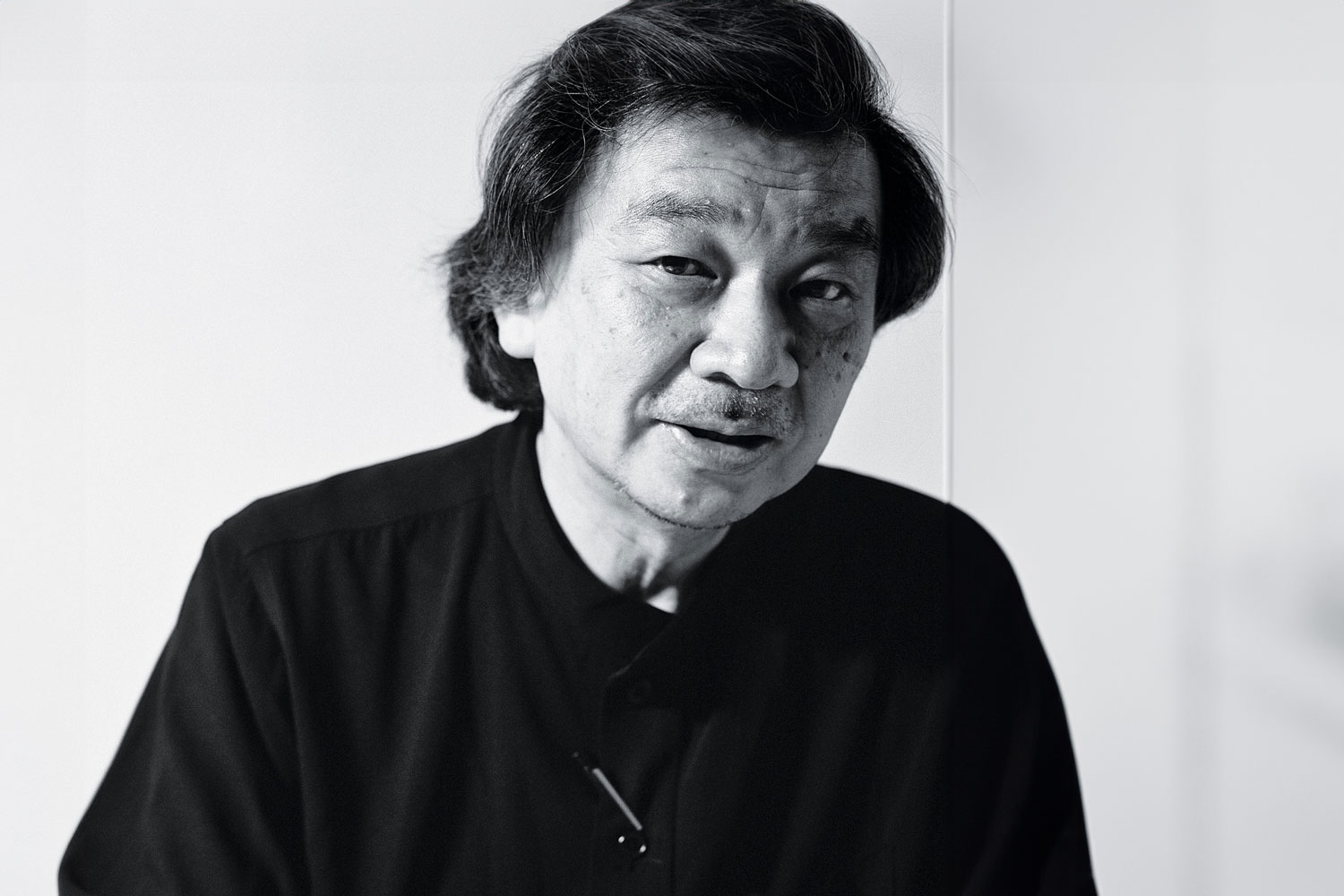
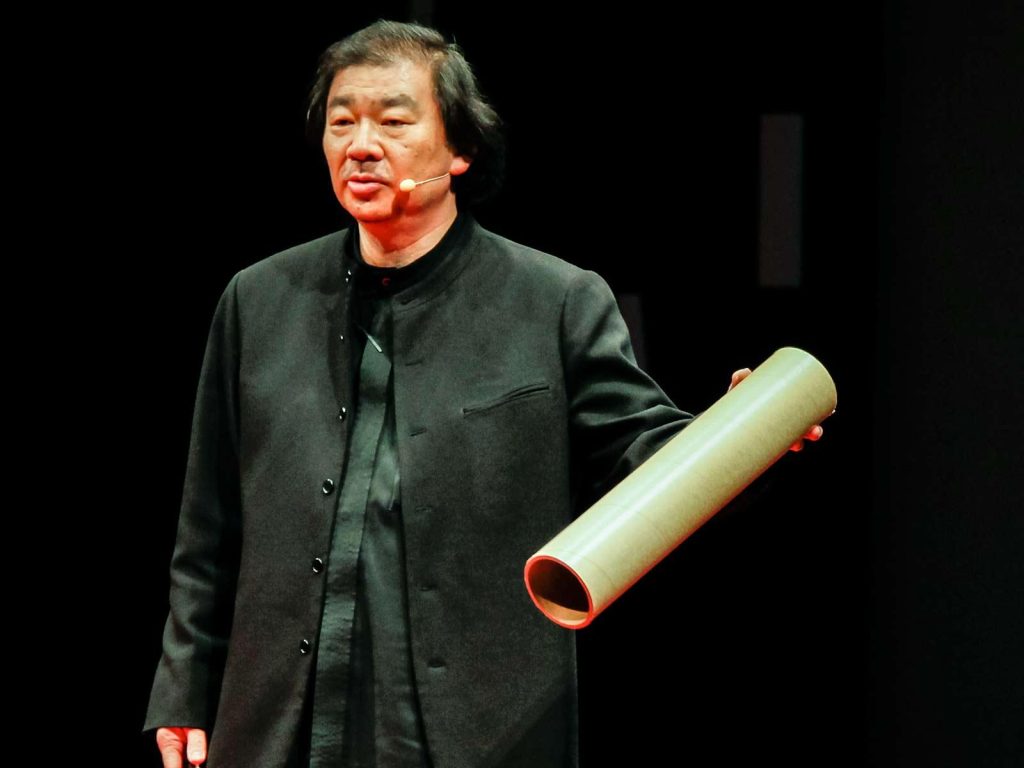
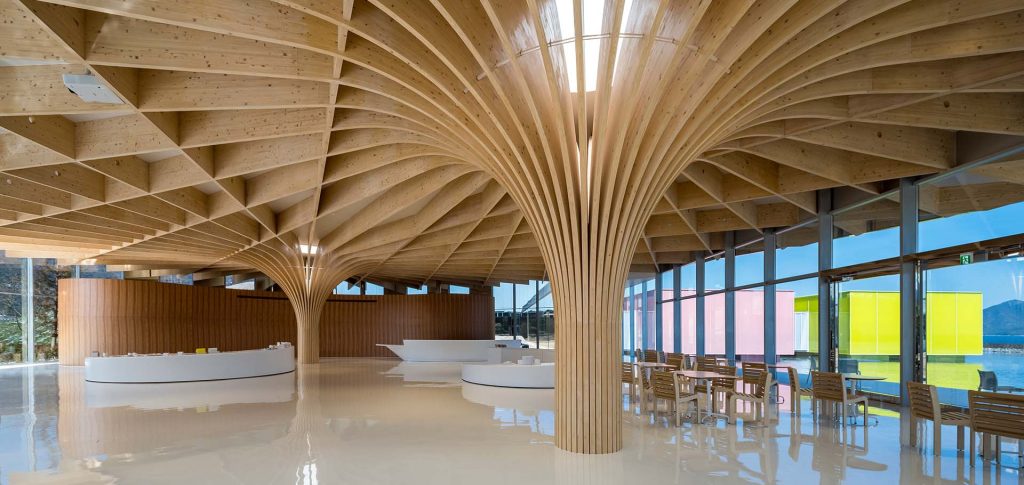
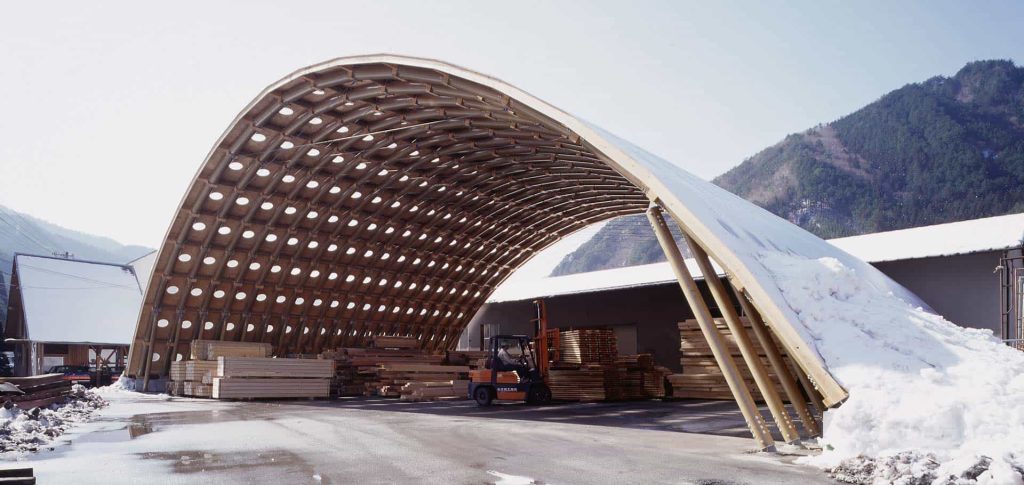
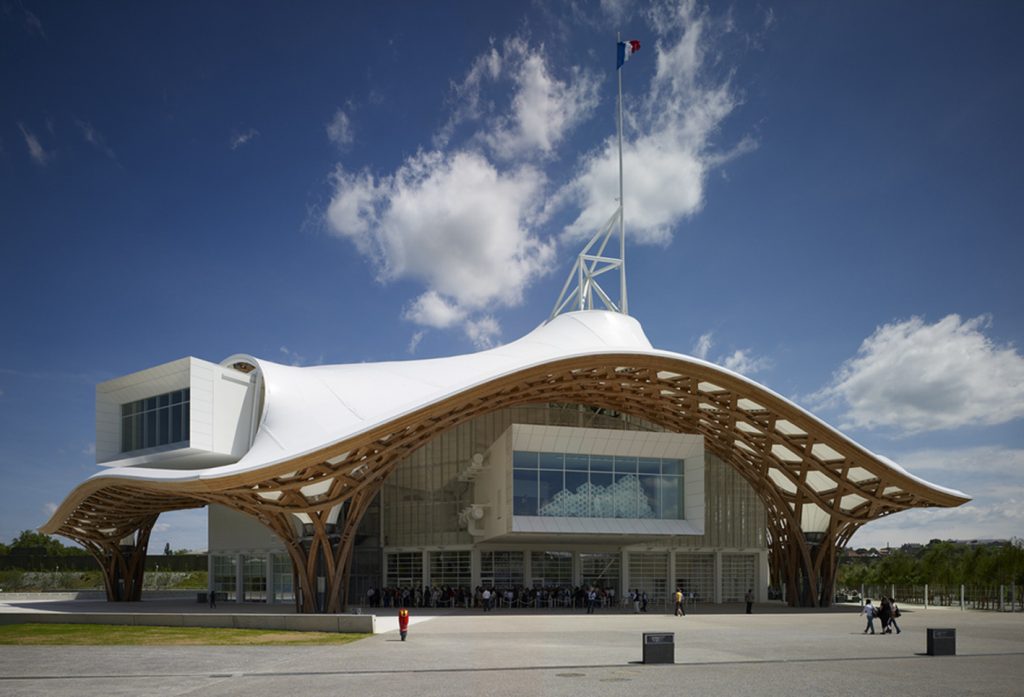
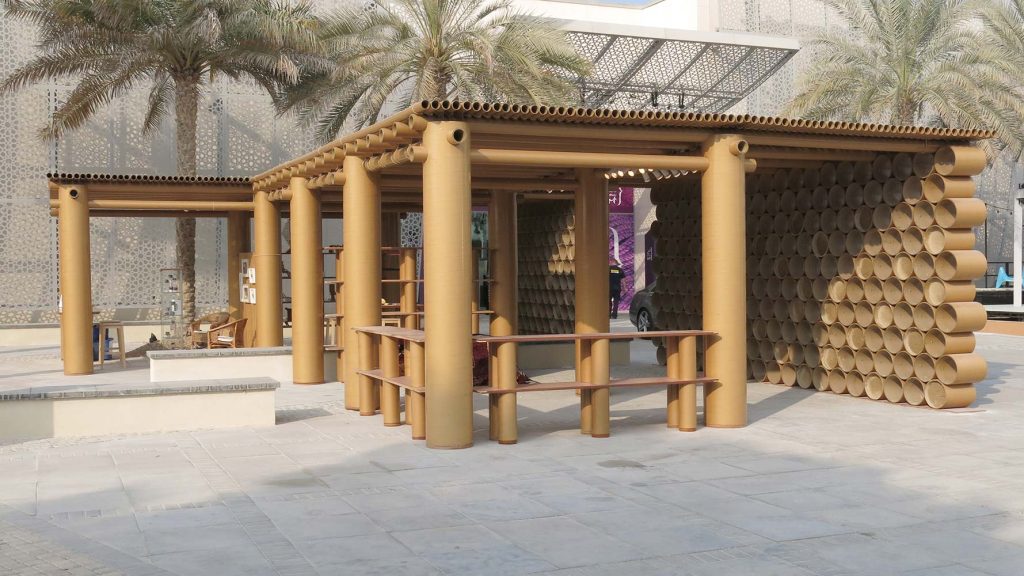
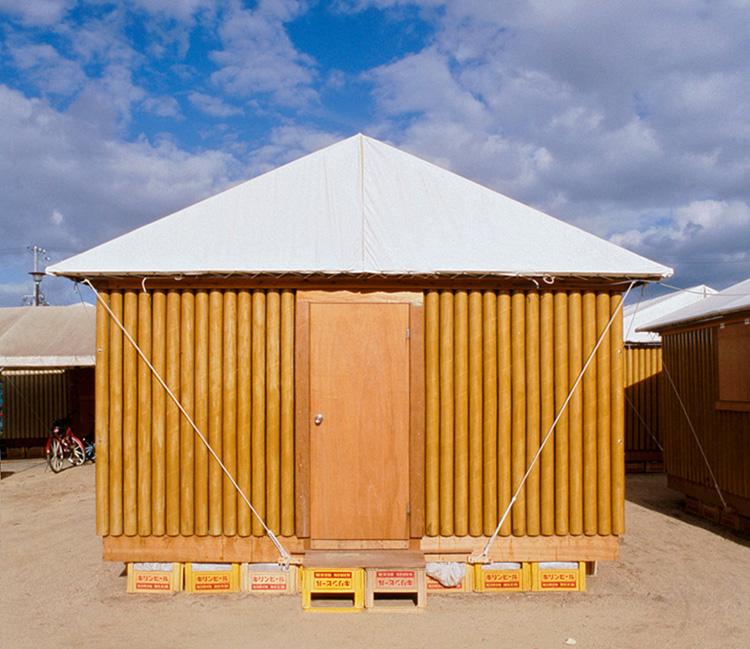
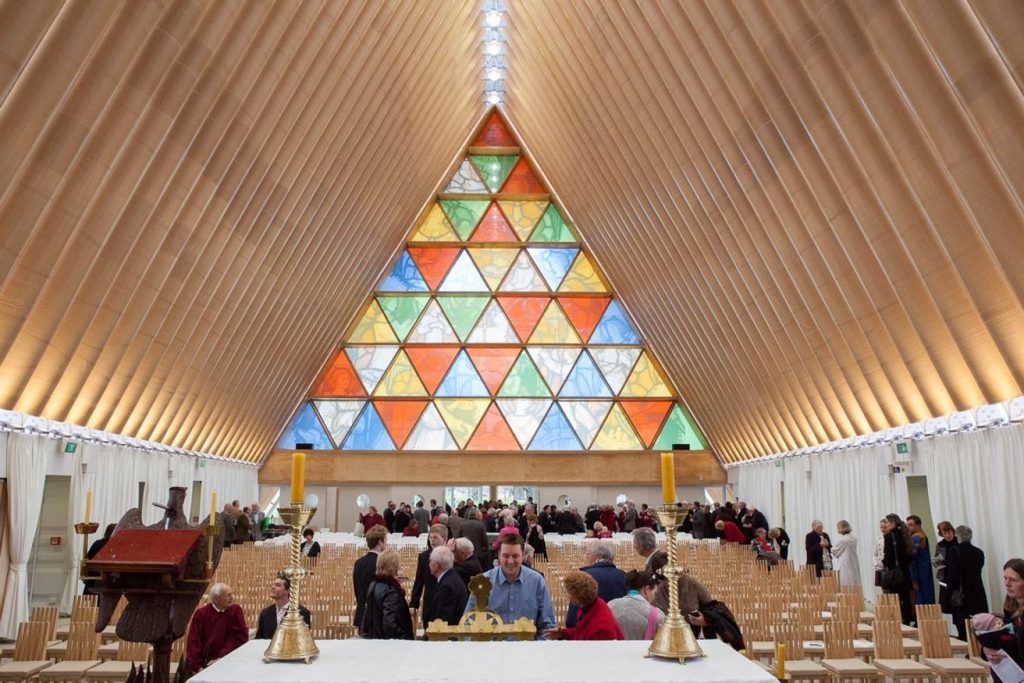

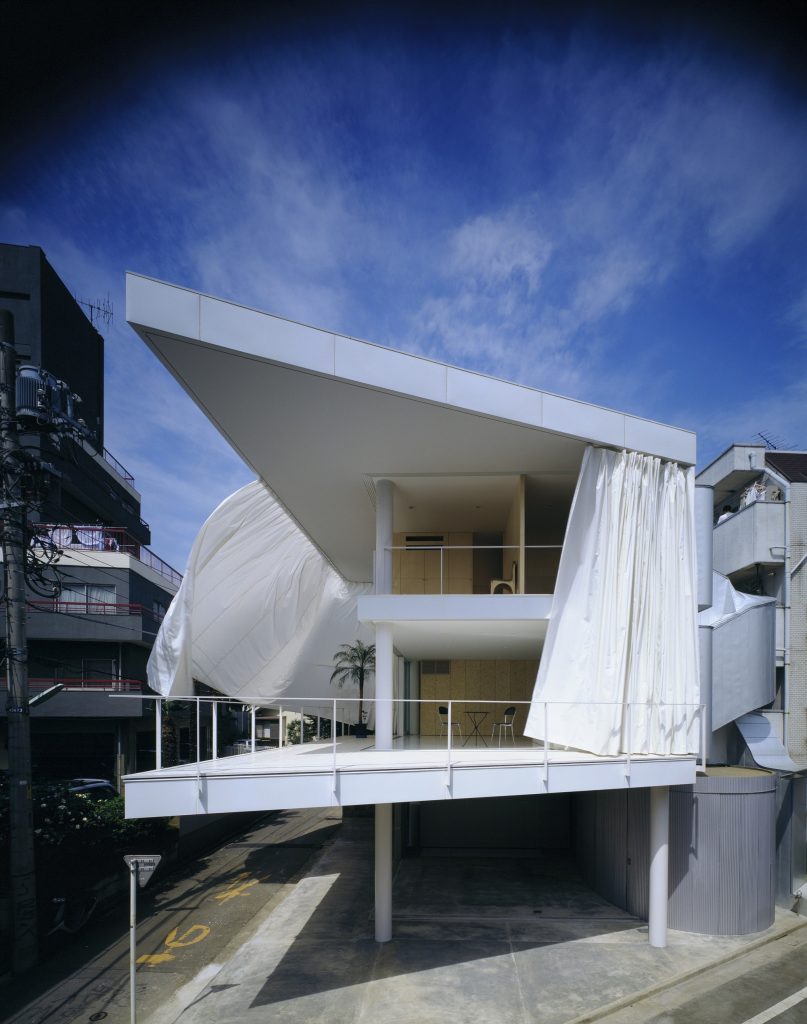
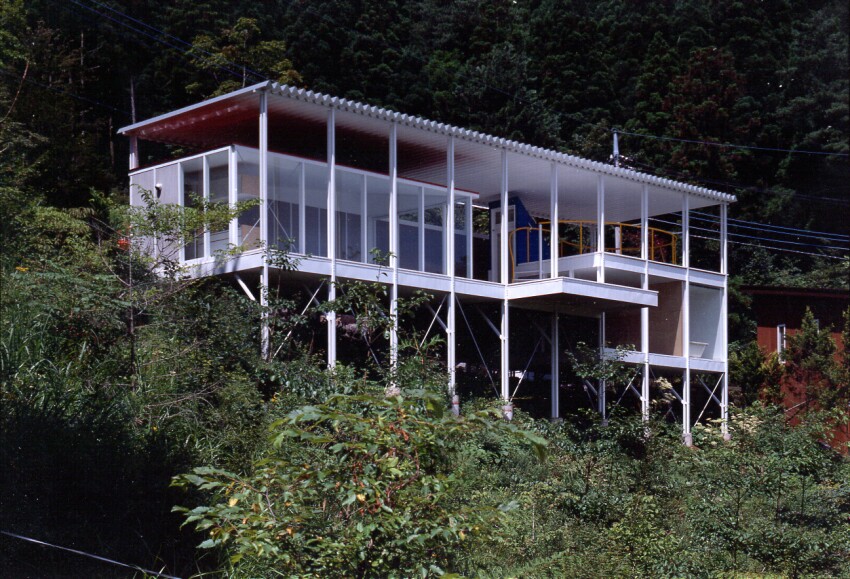
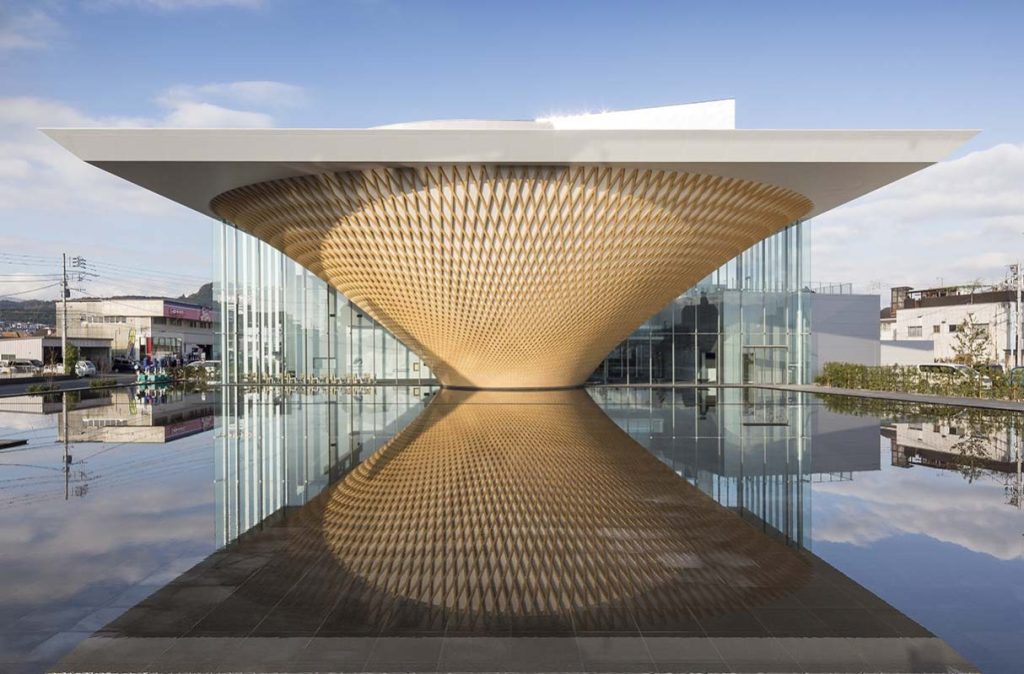




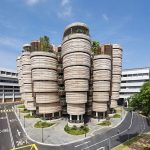









Leave a comment